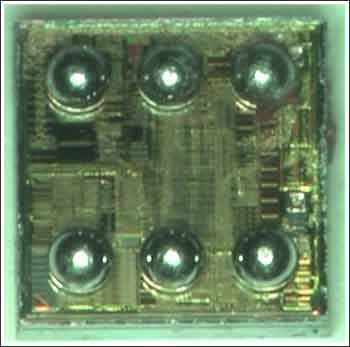Abstract: Portable power presents a range of design challenges. While major changes such as new battery technologies make headlines, the minor, almost negligible shifts are arguably more fascinating. The effects of these shifts is often non-linear µ a small change triggers a big change! Major shifts like this happen when battery technologies, dropping system voltages, new RF and display components, and, of course, power conversion advances, all interact.
Portable power presents a range of design challenges. While major changes such as new battery technologies make headlines, the minor, almost negligible shifts are arguably more fascinating. The effects of these shifts is often non-linear - a small change triggers a big change!
For instance, cellular phones used to require boost converters to power the RF power amp. The PA needed 5V but with only three cells in the battery pack, a boost converter was essential. As PA operating voltages dropped, the boost was no longer required and linear regulators came into play. Now, DSP voltage drops will likely motivate a return to DC-DC converters — but in step-down mode, rather than step-up.
Just a few tenths of a volt triggered wholesale changes in power supply architecture!
Major shifts like this happen when battery technologies, dropping system voltages, new RF and display components, and, of course, power conversion advances, all interact. What sorts of changes are likely to impact the future? Fuel cells with operating voltages down to 0.5V may bring boost converters back again. Or a new battery chemistry, with a different voltage profile, may requires something completely different.
New display technologies like OLED may change power management because they use no backlight. Even a less dramatic step, like using white LEDs rather than CCFL backlights, greatly simplifies power management. White LEDs have supplanted EL backlights and CCFLs in small LCDs (phones and PDAs) because LED drive circuitry is far simpler. A wide range of drive schemes can power white LEDs, including charge pump ICs, inductor-based converters, and even linear regulators. Simple (but less efficient) linear regulation's cost advantage will keep it in the fray.
Will white LEDs win their way into notebooks? It's the classic battle - a mature, but awkward, technology (CCFLs use fragile glass tubes and very high voltages) battling against a new one that is just emerging as mainstream. The results are inevitable, but the timing can be hard to predict. Just see how CRTs have hung tough for 70 or more years and the long-predicted demise of the hard drive in favor of solid state technologies seems farther and farther away.
The enabling technology for white LEDs may have nothing to do with LEDs - or any other semiconductor for that matter. As in "The Graduate", the watchword is "plastics!" Once an optical diffuser can convert an LED point source to an even backlight, the battle will be won. Expect then to see a single LED illuminate a 12"(or larger) LCD.
Diffuser technology is not new to solving problems like this. Advances in optical plastics over several years helped drive notebook display power consumption from typically 5 watts to well under 2 watts. That's a big improvement for a piece of plastic, and dwarfs efficiency advances achieved by CCFL inverters over the same time.
Portable power presents a range of design challenges. While major changes such as new battery technologies make headlines, the minor, almost negligible shifts are arguably more fascinating. The effects of these shifts is often non-linear - a small change triggers a big change!
For instance, cellular phones used to require boost converters to power the RF power amp. The PA needed 5V but with only three cells in the battery pack, a boost converter was essential. As PA operating voltages dropped, the boost was no longer required and linear regulators came into play. Now, DSP voltage drops will likely motivate a return to DC-DC converters — but in step-down mode, rather than step-up.
Just a few tenths of a volt triggered wholesale changes in power supply architecture!
Major shifts like this happen when battery technologies, dropping system voltages, new RF and display components, and, of course, power conversion advances, all interact. What sorts of changes are likely to impact the future? Fuel cells with operating voltages down to 0.5V may bring boost converters back again. Or a new battery chemistry, with a different voltage profile, may requires something completely different.
Size Does Matter
It's a safe bet that inside portable devices, we'll see more power conversion in smaller spaces, but not entirely due to semiconductor advances. Passive components, which historically lag ICs, are shrinking quite ably —ceramic caps and small magnetics in particular. Now, with higher speed power converters, several watts can be handled by only a few cubic mm of magnetic material. In some power supplies, you can't tell the inductors from the ceramic capacitors! In the short term and beyond, this will reduce designer "resistance" to magnetic components and put compact, highly efficient power conversion in a wider range of devices.Displays
In many ways, displays, and the power they consume, drive consumer technology. Display power is a specialty. In many products, the viewing experience will remain the source of product obsolescence. This will continue until screens match the ultimate display technology - paper! Screens have yet to match paper for resolution, weight, and power consumption.New display technologies like OLED may change power management because they use no backlight. Even a less dramatic step, like using white LEDs rather than CCFL backlights, greatly simplifies power management. White LEDs have supplanted EL backlights and CCFLs in small LCDs (phones and PDAs) because LED drive circuitry is far simpler. A wide range of drive schemes can power white LEDs, including charge pump ICs, inductor-based converters, and even linear regulators. Simple (but less efficient) linear regulation's cost advantage will keep it in the fray.
Will white LEDs win their way into notebooks? It's the classic battle - a mature, but awkward, technology (CCFLs use fragile glass tubes and very high voltages) battling against a new one that is just emerging as mainstream. The results are inevitable, but the timing can be hard to predict. Just see how CRTs have hung tough for 70 or more years and the long-predicted demise of the hard drive in favor of solid state technologies seems farther and farther away.
The enabling technology for white LEDs may have nothing to do with LEDs - or any other semiconductor for that matter. As in "The Graduate", the watchword is "plastics!" Once an optical diffuser can convert an LED point source to an even backlight, the battle will be won. Expect then to see a single LED illuminate a 12"(or larger) LCD.
Diffuser technology is not new to solving problems like this. Advances in optical plastics over several years helped drive notebook display power consumption from typically 5 watts to well under 2 watts. That's a big improvement for a piece of plastic, and dwarfs efficiency advances achieved by CCFL inverters over the same time.
 电子发烧友App
电子发烧友App

























评论